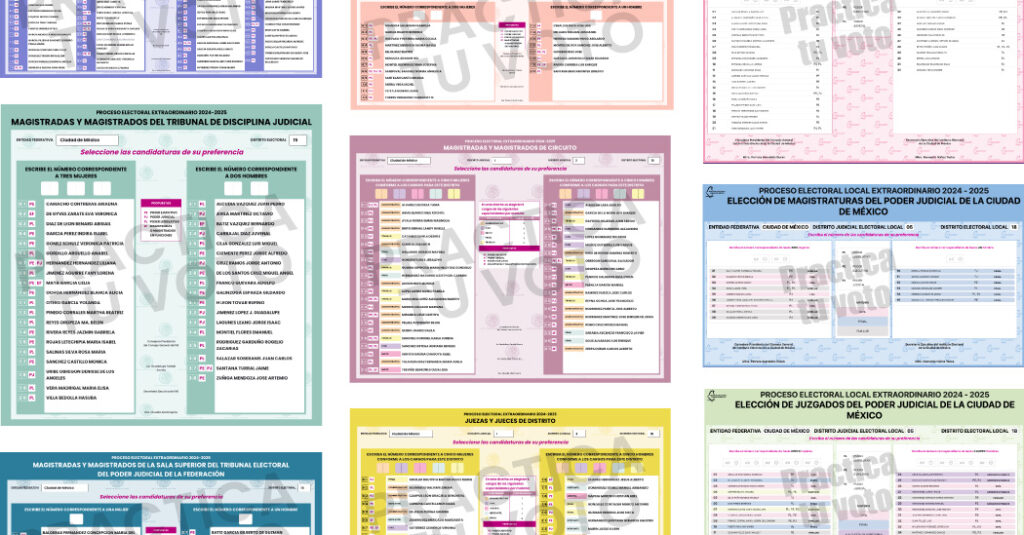The plan is simple. Mexicans will vote on Sunday to elect judges across the country, in a vast overhaul that reaches from the Supreme Court to every level of the justice system.
The execution, however, can boggle the mind.
Voters are expected to choose nearly 2,700 judicial positions out of 7,800 candidates across federal and state elections, a huge undertaking whose complexity can be seen in the dizzying variety of color codings, candidate groupings and types of ballots that will be handed out.
In one state, 155 candidates are on a single page, reflecting the ambitions of Mexico’s governing Morena party to democratize the system. In another state, there is essentially no choice at all — what critics call a sign of the overhaul’s deep flaws.
The national election agency features a ballot simulator on its website, where citizens can practice voting and click on each candidate’s name to learn about that person.
But if a voter took five minutes to study each candidate, that would amount to over five hours for this ballot alone.
Voters will also elect 464 circuit court and 386 district court positions across Mexico. But these ballots vary by circuit and district.
Not everyone in the country will see the same specialties or vote for the same number of judges.
In some densely populated areas, there are so many positions that the national election authorities used a lottery to split up which candidates appear on which ballots.
“We are only going to elect a small number of judges who are going to hear our cases,” said Javier Martín Reyes, a law professor at the National Autonomous University of Mexico.
State ballots vary widely
All Mexican voters can cast ballots for federal candidates, but in 19 states, voters will have to choose local judges, as well, in some cases doubling the number of ballots that voters will have to sift through. (The remaining judicial positions will be elected in 2027.)
In Chihuahua state, voters will have to elect 305 local judges from nearly 900 candidates, the most officials on the ballot in any state. Voters in this district of Chihuahua, Morelos, have to go through 13 ballots — six federal and seven local — to get to all the candidates.
On this ballot for a low-level court, voters must choose five women and five men from 155 names.
At the other end of the spectrum is Durango state, where there are 49 positions up for grabs in the local court system on Sunday and 49 candidates.
All three branches of state government agreed on the same candidates — drawing criticism from local residents and legal experts who say this will be a simulation of an election, not a real one.
Those critics argue that the overhaul of the courts could give the governing party more power and open the door to underqualified or easily influenced candidates.
Supporters of the overhaul, including Mexico’s president, have downplayed those risks, saying that the vote will help root out corruption and nepotism by giving citizens the chance to pick their own judges, in contrast to the previous appointment-based system.
But in Durango, at least, each candidate needs only one vote to win. The number of votes still matters, though, because it will determine term limits and who will be the presiding judge in some courts, according to state officials.
On this page of the Durango ballot, eight women are vying for eight positions, and seven men are up for seven positions.
For this juvenile court in Durango, the ballot has one candidate for one position.
In the states of Coahuila and Quintana Roo, the ballot looks completely different.
Instead of choosing individual candidates, voters in those states will choose one of three columns, each representing the group of candidates put forth by the state’s executive, legislative and judicial branches.
The format is far simpler than the sprawling ballots that voters will receive in other states, but critics have argued that it gives voters fewer options and puts more power in the hands of those branches of government.
https://www.nytimes.com/interactive/2025/06/01/world/americas/mexico-judicial-election-ballots.html


